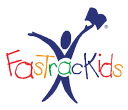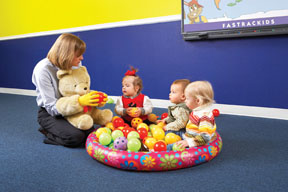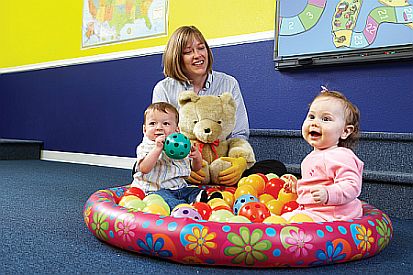|
Based on American Sign Language (ASL) practices, FasTrack Signing offers two levels of classes. The “Beginner Play Class” is appropriate for children 6 months – 2 years old. No experience with signing is necessary. The “Intermediate Play Class” is designed for families with children 12 months and older who have taken the Beginner Play Class and already know some signing. Classes include learning gestures to songs, small activity groups as well as large group interactions. ASL practices may lead to increased IQ and may promote higher level of speech and dynamic impact on language development for your child. FasTrack Signing creates a “community for learners”, where parents socialize with each other while interacting with their infants. FasTrack Signing uses four unique strategies to facilitate a child’s learning and conceptual development. “The Four FasTrack Signing Strategies” are all important components to learning to communicate effectively with your infant.
FasTrack Signing teaches how to recognize when your child is fully engaged and how to use that moment to teach the appropriate gesture. Utilizing Signing Moments makes interactions between a parent and child a two-way conversation.
2. Immersing Your Child in Signs Children learn signs faster when parents produce a sign on an object or directly on their child’s body in order to give the child a feel for the sign. For example, an infant will learn the sign for “ball” more easily if they are playing with an actual ball. 3. Understanding Your Child’s Unique Signs Your child could be signing to you and you might not recognize it. This strategy helps parents begin to notice their child’s early signs. When children are learning to talk, their early words are approximations of the words they hear people say. The same is true for signing. 4. Reinforcing a Lifelong Love of Learning The FasTrack Signing program provides the tools to promote both early communication and long-term learning. Teaching the signs and strategies through context allows parents to expand the use of signing in a constructive and fun early childhood environment.
|


 Have you ever wondered what your infant is thinking? This program is designed for infants and toddlers between the ages of 6 months – 2 years who will eventually develop the capacity to communicate verbally. This program is designed specifically for children; but as every parent knows their child can communicate before he or she is able to speak. In this program parents, caregivers and babies are taught how to communicate through gestures, even before the child can speak! Research shows that children who learn how to communicate through gestures (signing) begin to speak with a larger vocabulary. Having a way to communicate between parent and child can also reduce a lot of frustration. FasTrack® Signing classes run once a week for 45 minutes, making it a nice fit for busy schedules.
Have you ever wondered what your infant is thinking? This program is designed for infants and toddlers between the ages of 6 months – 2 years who will eventually develop the capacity to communicate verbally. This program is designed specifically for children; but as every parent knows their child can communicate before he or she is able to speak. In this program parents, caregivers and babies are taught how to communicate through gestures, even before the child can speak! Research shows that children who learn how to communicate through gestures (signing) begin to speak with a larger vocabulary. Having a way to communicate between parent and child can also reduce a lot of frustration. FasTrack® Signing classes run once a week for 45 minutes, making it a nice fit for busy schedules. 1. Recognizing Appropriate FasTrack Signing Moments
1. Recognizing Appropriate FasTrack Signing Moments